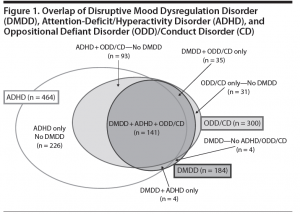(Editor note: I am pleased to post a new entry by one of our first year child psychiatry fellows – Feyza Basoglu, MD. After all the new electronics many families received for the holidays, it gives us something to ponder – DR).
“Addiction” has long been used as a term for only chemical dependence but is gaining popular use for behaviors such as gambling, shopping, food, work, and sex. Steadily increasing numbers of studies are being conducted on “internet addiction” that captures a wide variety of behaviors like browsing, social networking, playing video games etc. There is no universally accepted definition or an assessment tool for internet addiction and this may be why the prevalence has a very wide range

Feyza Basoglu, MD
of 0.3-10%. One widely accepted definition is “a psychological dependence on the Internet, regardless of the type of activity once logged on”. On the other hand, some argue that if a person logs on for a particular use each time, for example, playing video games, this makes him/her addicted to video games, not the internet. Studies suggest that the internet itself is not addictive, but that some specific applications, especially those with interactive functions, appear to contribute to the development of pathological use.
Internet infidelity and serious relationship problems are the most common “consequences” in the US. On the other hand, loss of productivity has been more of an issue in Asian and some developing countries. The Chinese Government instituted laws to limit the number of hours adolescents can play online games and in 2005 and opened the first treatment center for internet addiction in Beijing. Predominantly they treat addicted online gamers. Online gaming addiction continues to raise such serious concerns that detox centers for video game addiction have opened and the American Medical Association considered video game overuse an addiction at their annual policy meeting.
Although there is not a standardized terminology, internet addiction is conceptualized as an impulse control disorder. It will not be specifically included in DSM V but has been considered to be mentioned in the appendix. The most valid and reliable way to assess internet addiction is to use the adapted DSM IV criteria for pathological gambling by changing the word “gambling” to “internet use”. There are also tools like the Internet Addiction Diagnostic Questionnaire (IADQ) developed as an initial screening instrument utilized for diagnosis in academic, research and clinical treatment settings.
Depression, dysthymia, anxiety, hostility and interpersonal sensitivity are the most frequent co-occurrences in internet addiction. Data suggest that internet addiction is a relevant factor among minors in psychiatric institutions. Those with comorbid internet addiction show distinct patterns of psychopathology and may require disorder-specific treatment. Adolescents with substance abuse issues have been proven to be highly likely to have internet addiction. Especially young, male patients in treatment for cannabis dependence or pathological gambling are at risk for co-morbid internet addiction. This is not surprising given the fact that internet use, for whatever application it is tempting to that adolescent, has been shown to increase dopamine activity in nucleus accumbens, the pleasure center of our brains. For depressed adolescents, however, it has been a dilemma whether internet use helps to cope with or amplify depressive symptoms. Adolescents see the internet as a safe place to absorb themselves mentally to reduce their tension, sadness, or stress. Individuals may feel overwhelmed and can lose themselves in anything from online pornography, internet gambling, or online gaming and once online, the difficulties of their lives fade into the background as their attention becomes completely focused on the computer. The Internet becomes a new way of escaping without really dealing with it.
To many parents’ confusion and frustration, youth with ADHD can stay still and attend to their video games. Core symptoms reported in ADHD are ‘‘being easily bored’’ and ‘‘having an aversion for delayed reward’’. Internet behavior is characterized by rapid response, immediate reward, and multiple windows with different activities, which may reduce the feeling of boredom or provide immediate stimulation and reward. Striatal dopamine is released during video gaming, which helps the game players keep focused on gaming. Also lack of self-control may cause individuals with ADHD to have difficulty in controlling internet use and hence become vulnerable to addiction. Motivation deficit, an anomalous reaction to reward and punishment, has been reported to be an endophenotype of ADHD. Internet activities, especially for online gaming, usually provide immediate response and reward. Finally impulsivity, hyperactivity, and inattention usually negatively influence individuals’ interpersonal relationships. However, these deficits could be masked well online.
Cognitive-Behavioral Therapy (CBT) has been found to be the most effective approach with Internet-addicted clients. Underlying psychosocial issues that often coexist with this addiction (e.g., social phobia, mood disorders, sleep disorders) need to be diligently addressed. Establishing a sleep cycle has been shown to be essential.
Activity monitoring schedules, working towards controlled use rather than complete abstinence, refraining from problem applications, education to increase parent-child communication and family time, identifying core beliefs (I am worthless but important online), addressing rationalization (a few more minutes won’t hurt) are all potentially useful interventions. Identifying responsible and effective ways to satisfy needs through other activities beyond the computer and cultivating a ‘success identity’ by joining a gym, take up yoga, or join a book club, anything that empowers them motivate to stay away from the computer can also be helpful. Motivational therapy has not been proven successful. Ironically, for a subgroup who otherwise would not present in treatment, online courses have been created. Pharmacological approaches are limited; two studies showed significant decrease in hours and decreased cravings with use of escitalopram and bupropion SR.
This is an era of shifting traditions. It is a curious question whether Generation Z and Alpha will benefit or suffer from this shift in their future. Realistically, how many of us needed to apply rules in our houses to limit our kids’ internet times? Let alone our kids, how many of us ourselves have checked our e-mails or Facebook accounts first thing in the morning? Is the world addicted all at some level or this is part of normality as long as it stays within reasonable limits? All yet to be answered.
References:
1-Cash et.al. Internet addiction: A Brief Summary of Research and Practice. Current Psychiatry Reviews,2012,8,292-298.
2-Chou et.al. A Review of the Research on Internet Addiction. Educational Psychology Review, Vol. 17, No. 4, December 2005
3-Internet addiction: hours spent online, behaviors and psychological symptoms. General Hospital Psychiatry 34 (2012) 80–87.
4-The association between Internet addiction and psychiatric disorder:A review of the literature. European Psychiatry 27 (2012) 1–8
5-Problematic Internet Use Among US Youth: A Systematic Review. Arch Pediatr Adolesc Med. 2011 September; 165(9): 797–805.
6-Shapiro et.al (2000). Psychiatric evaluation of individuals with problematic Internet use. Journal of Affect Disorders, 57:267-272.
7-Sang-Min et.al (2003) Internet Over-Users’ Psychological Profiles: A Behavior Sampling Analysis on Internet Addiction, CyberPsychology & Behavior.
8-King et.al. Cognitive-Behavioral Approaches to Outpatient Treatment of Internet, Addiction in Children and Adolescents. JOURNAL OF CLINICAL PSYCHOLOGY: 68(11), 1185–1195 (2012)
9- www.netaddiction.com The Center for Internet Addiction Recovery









